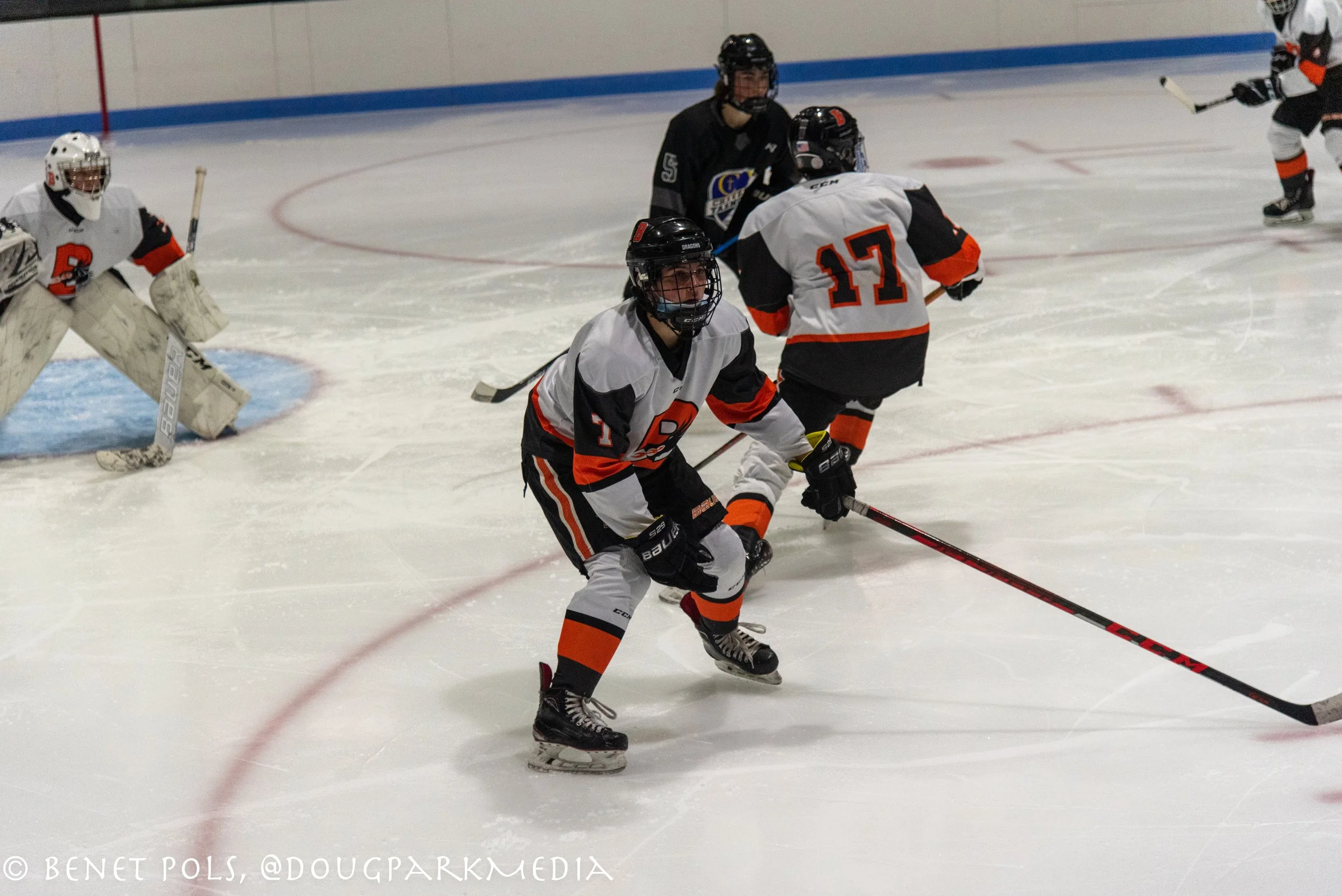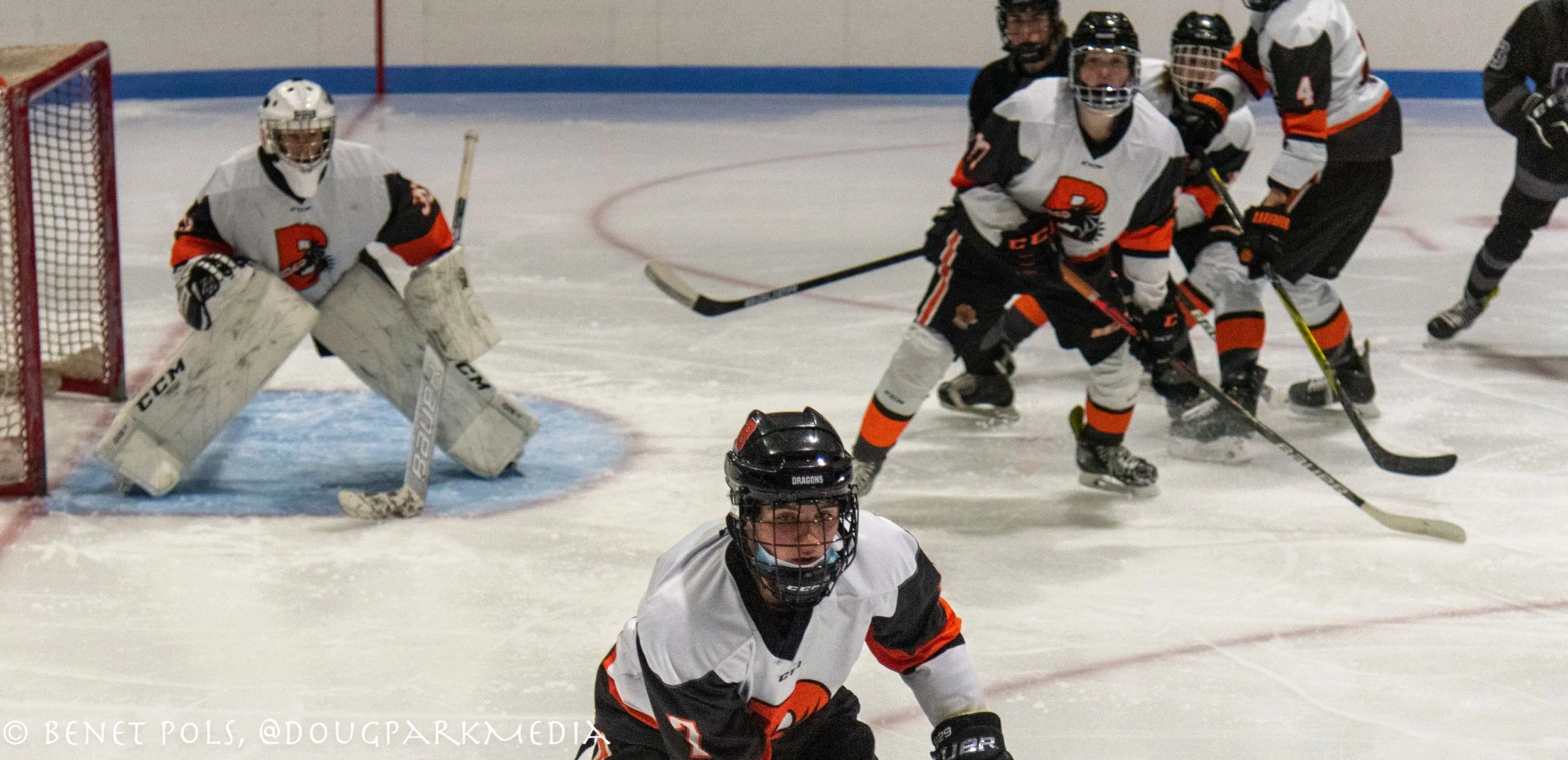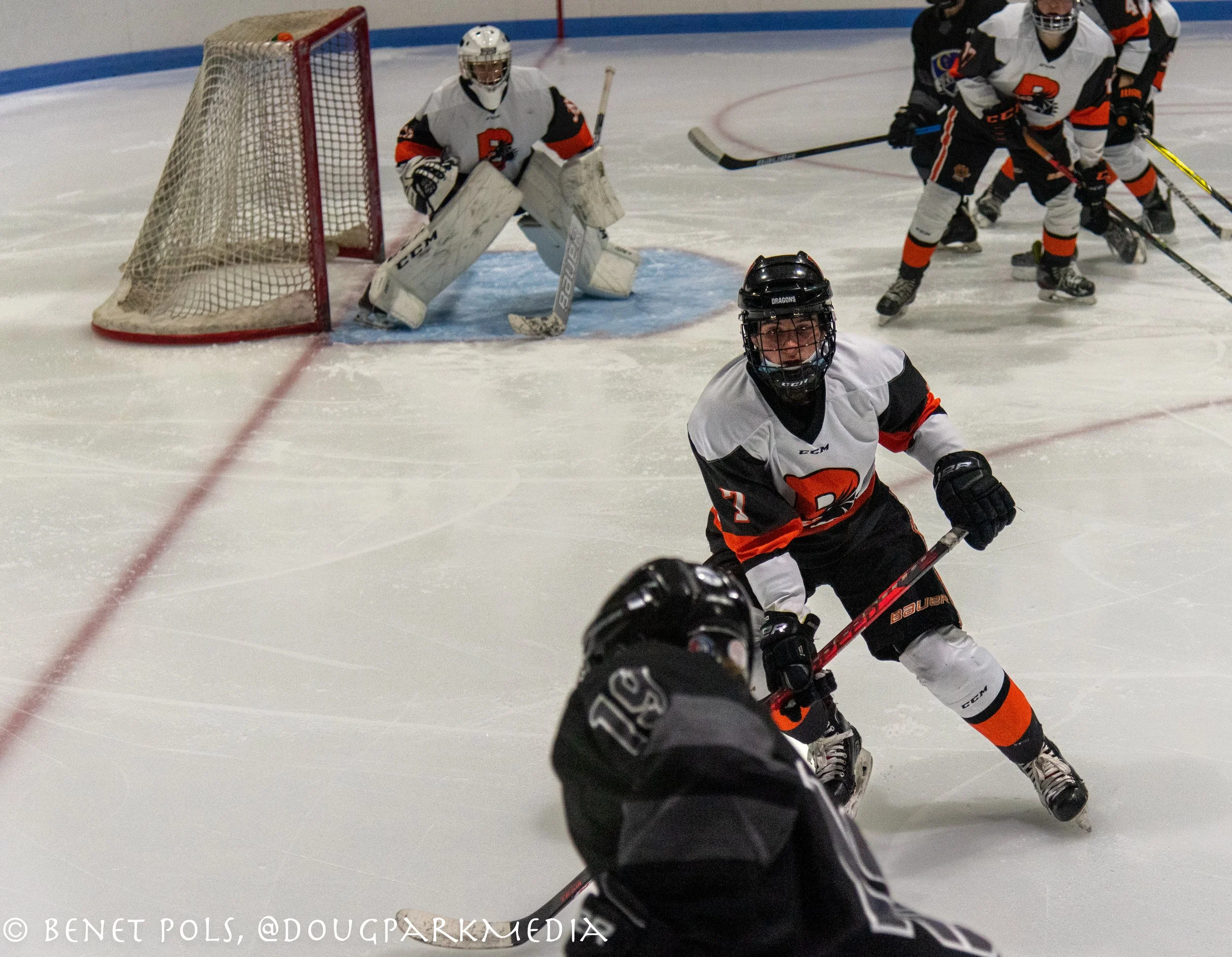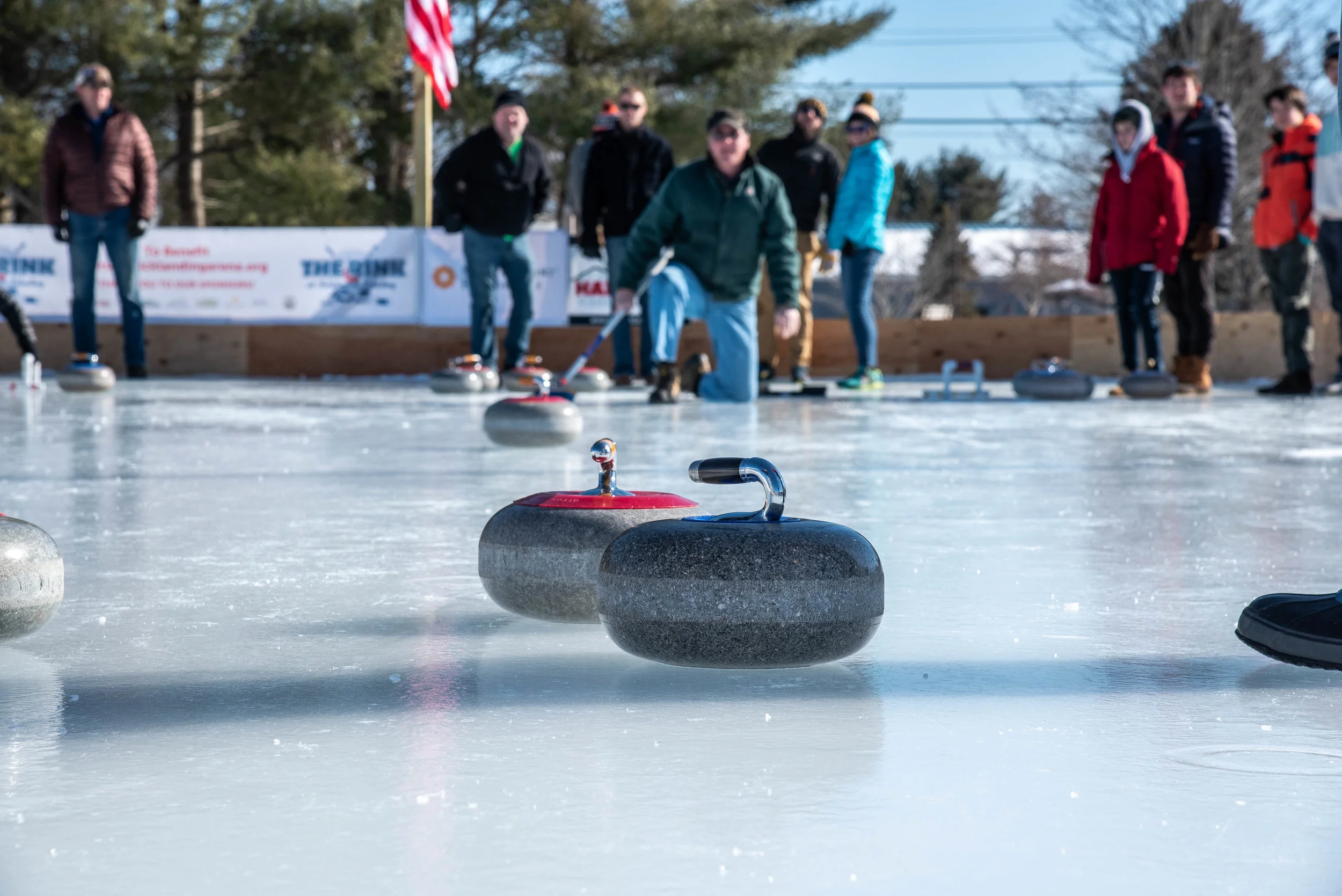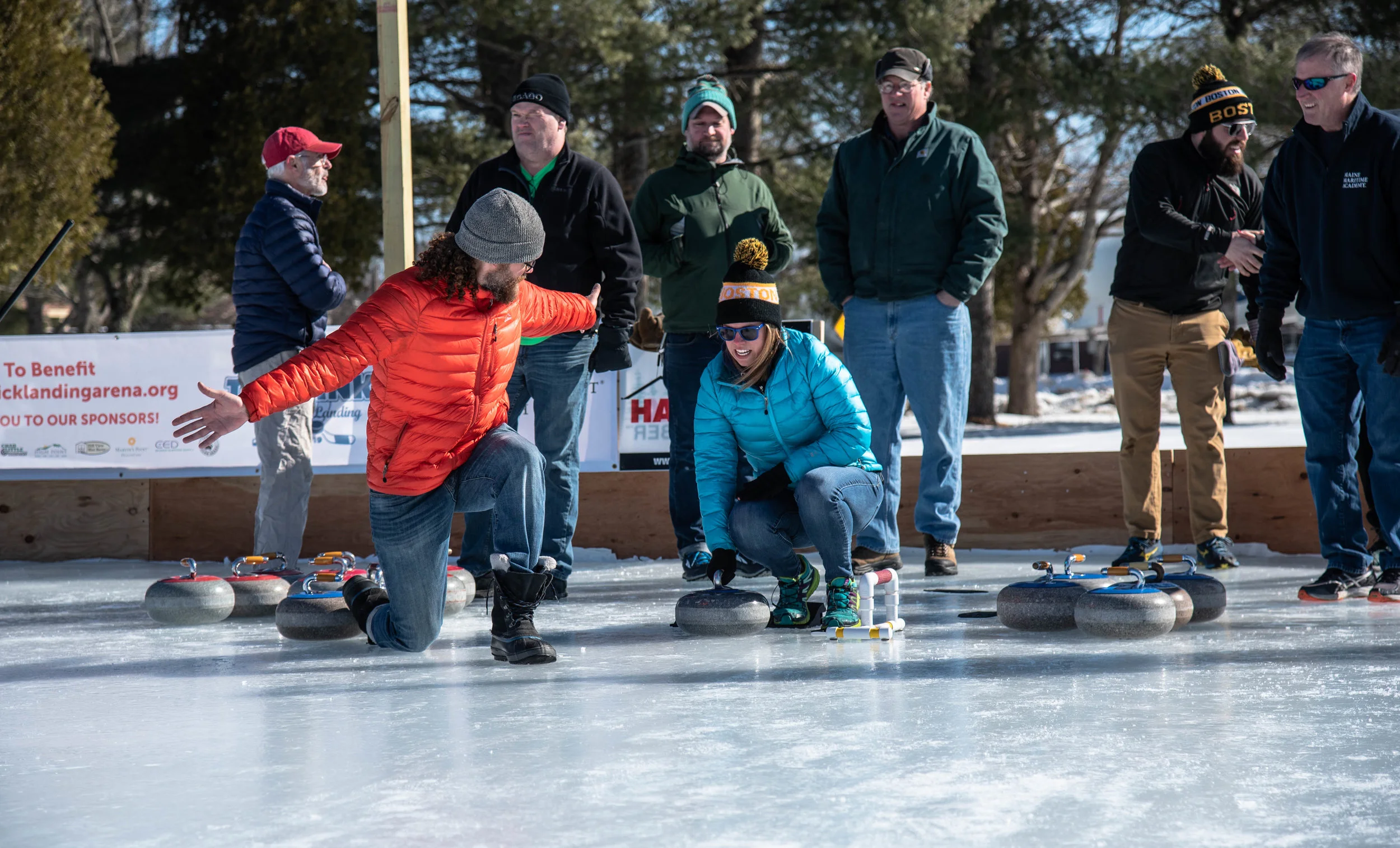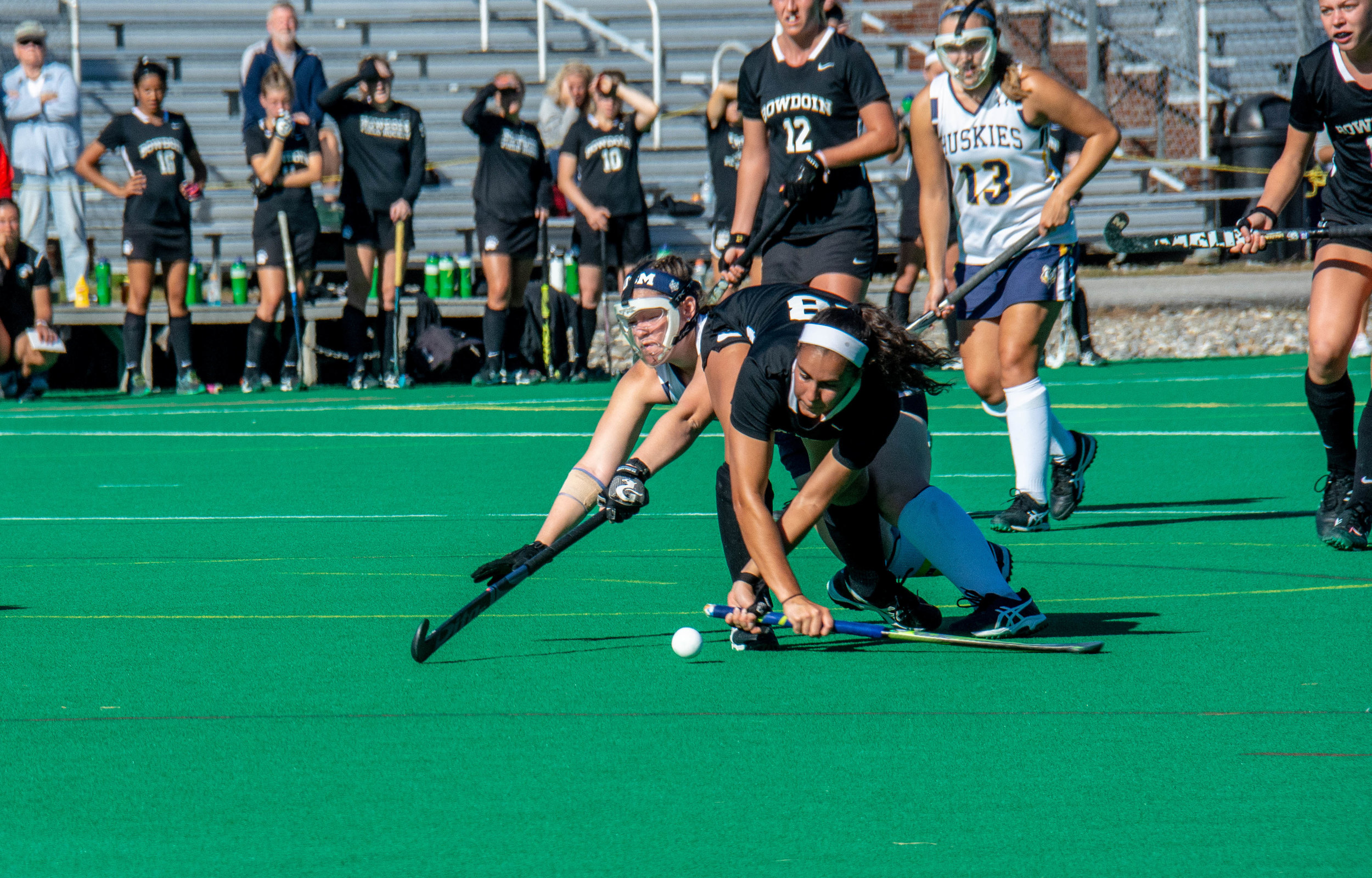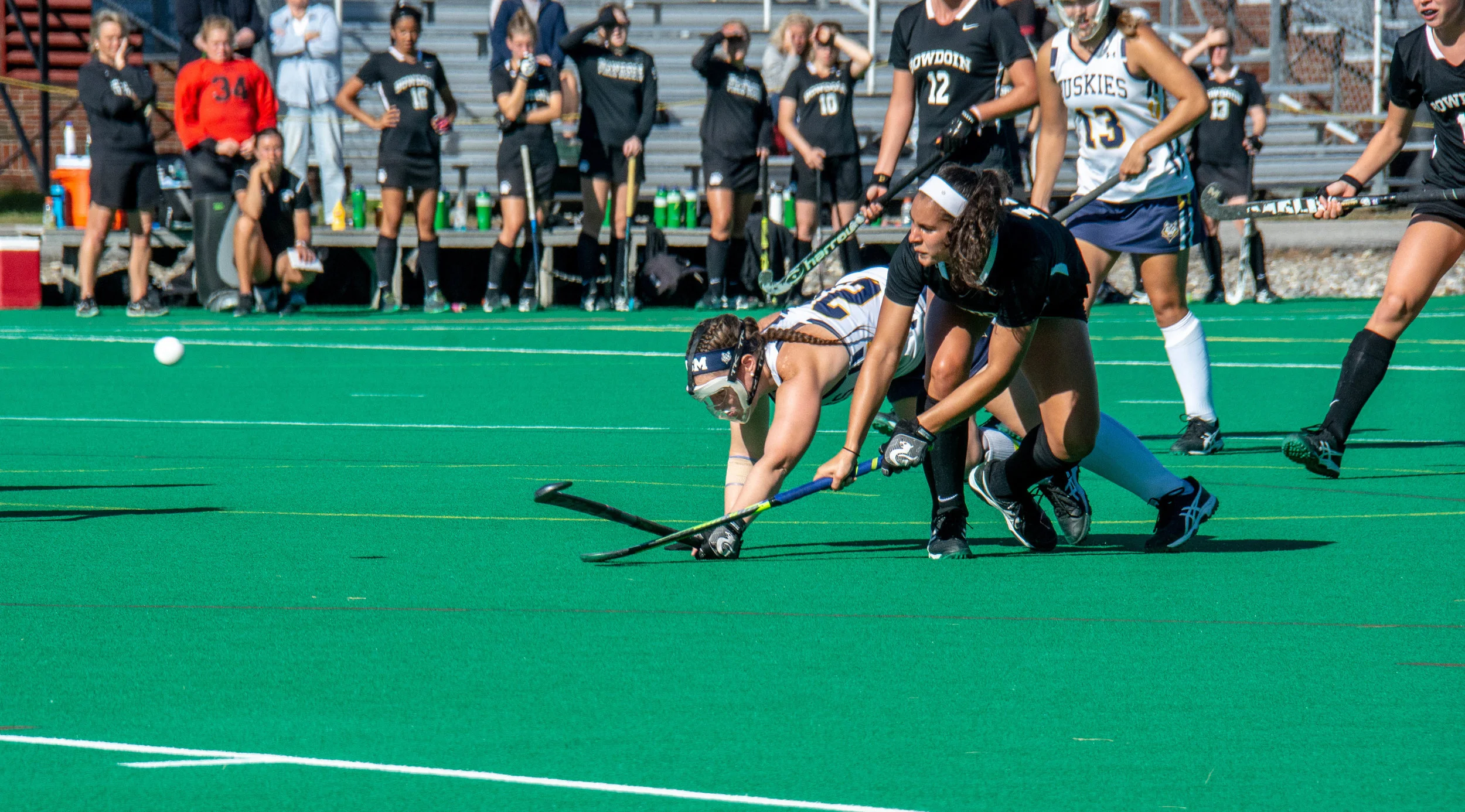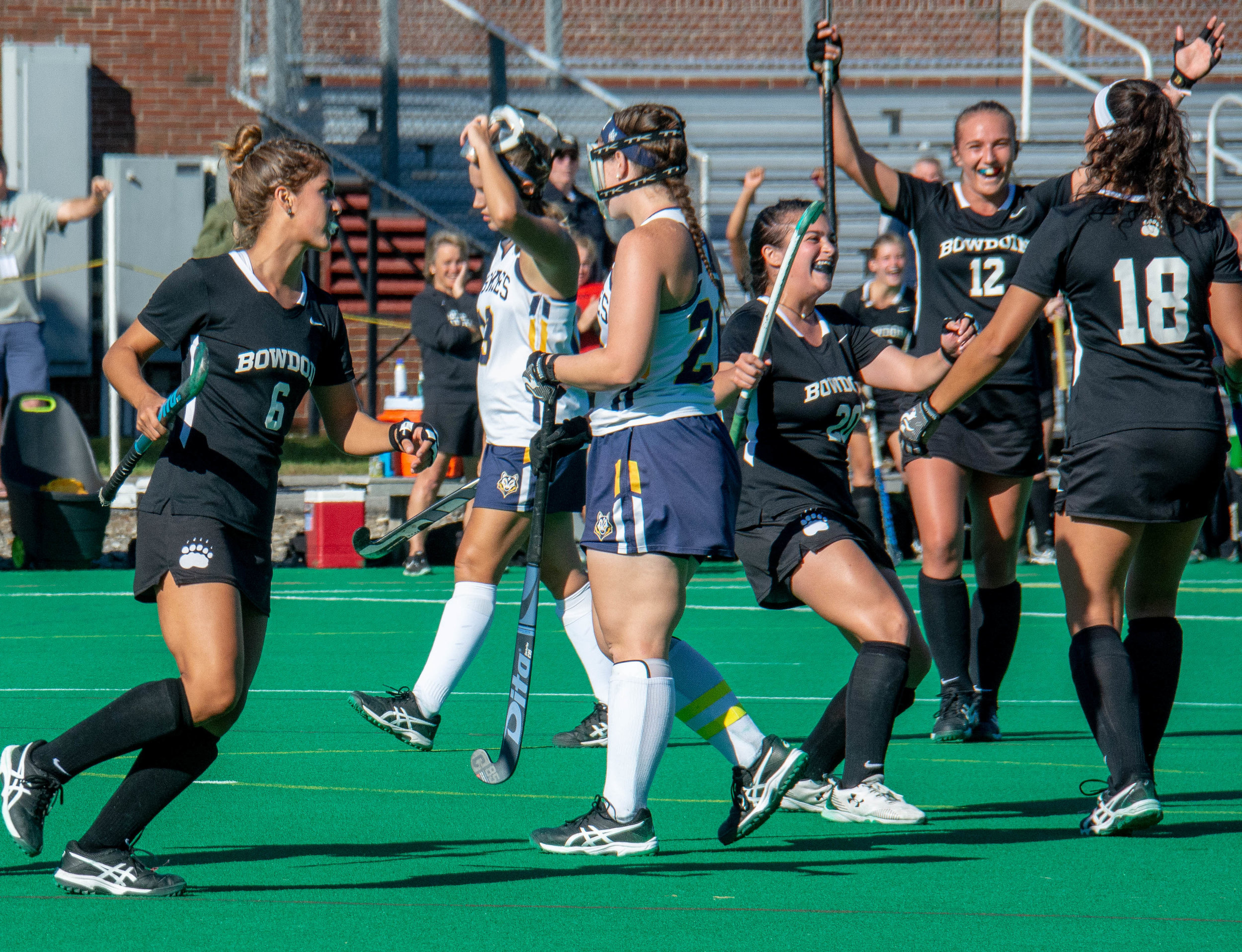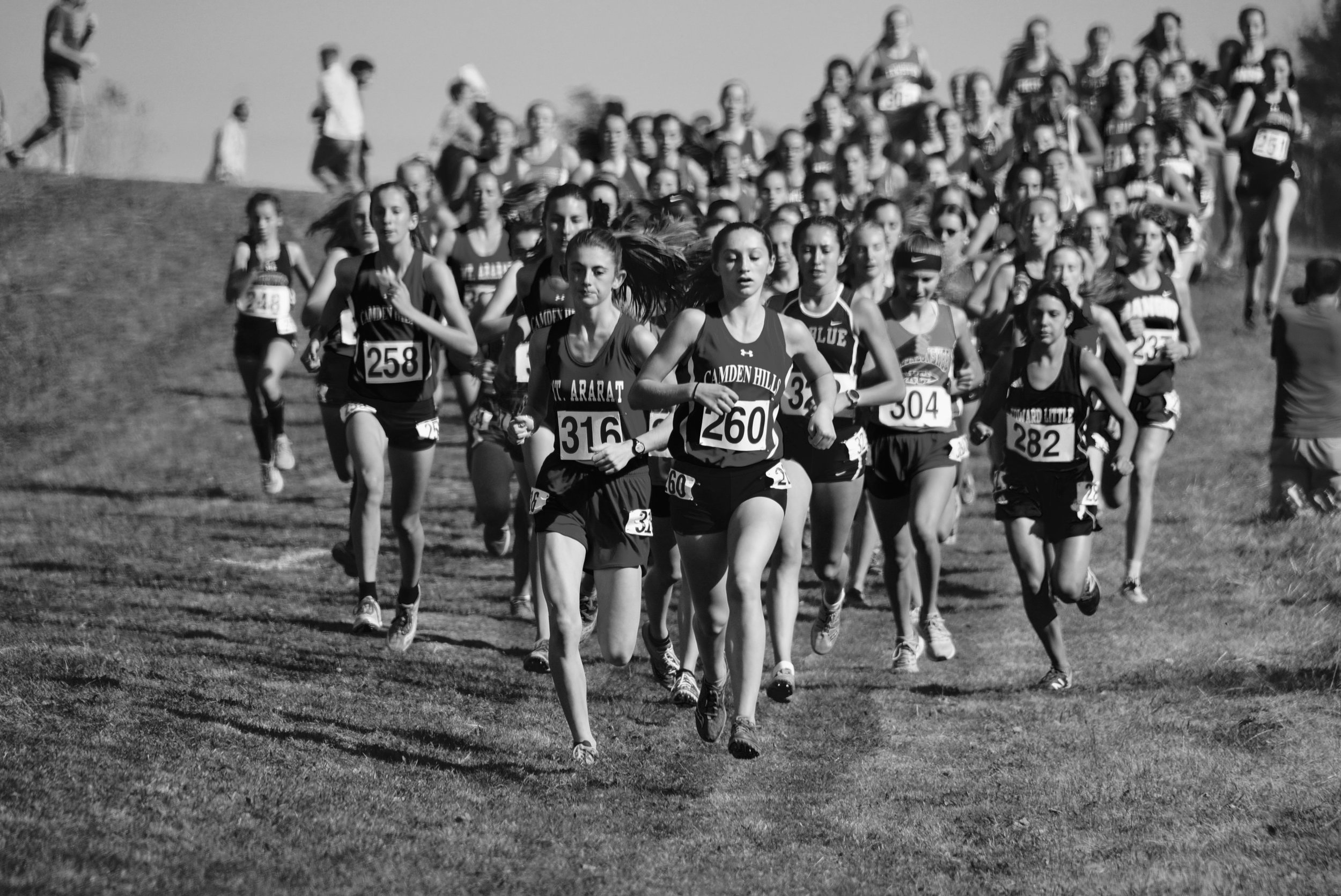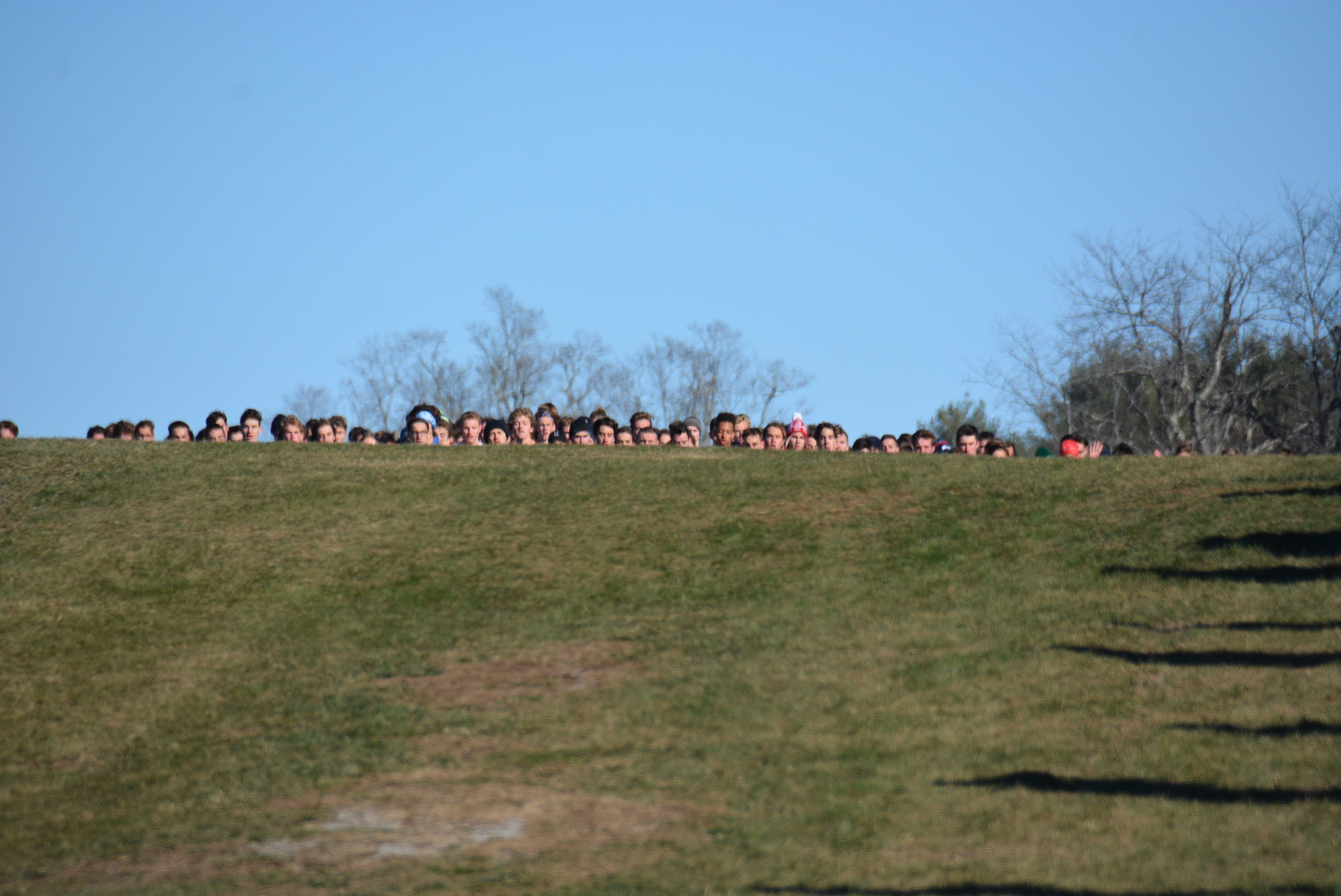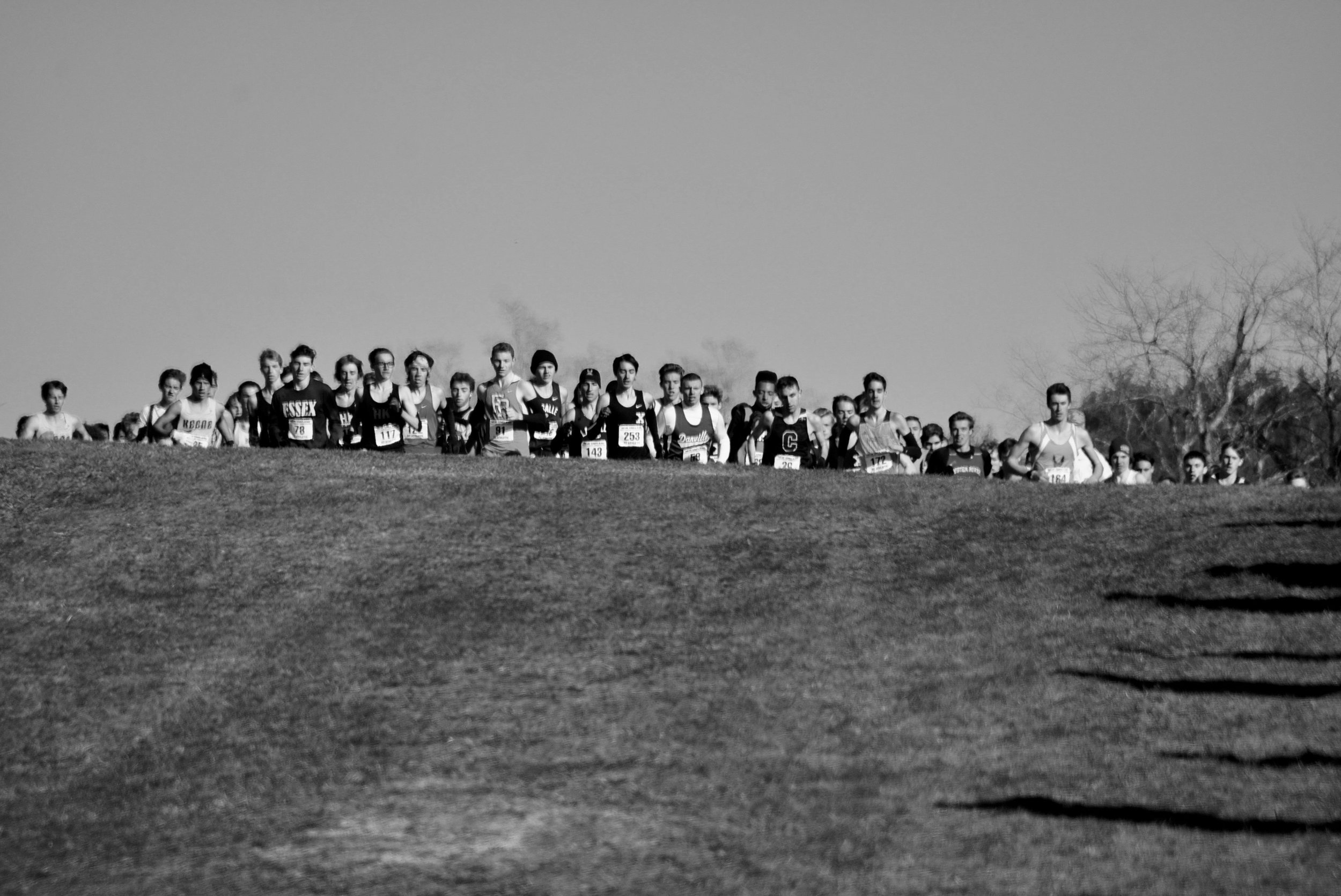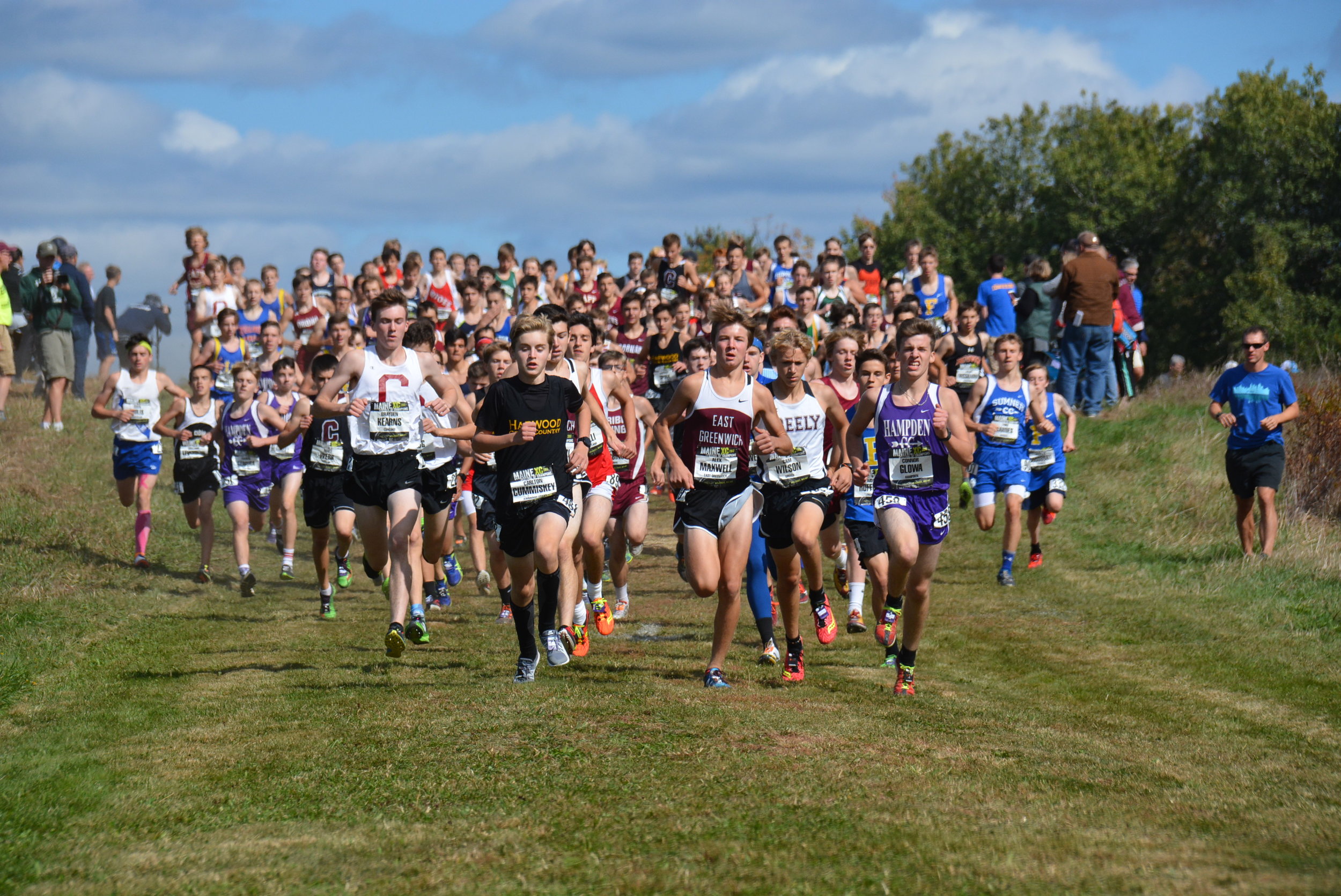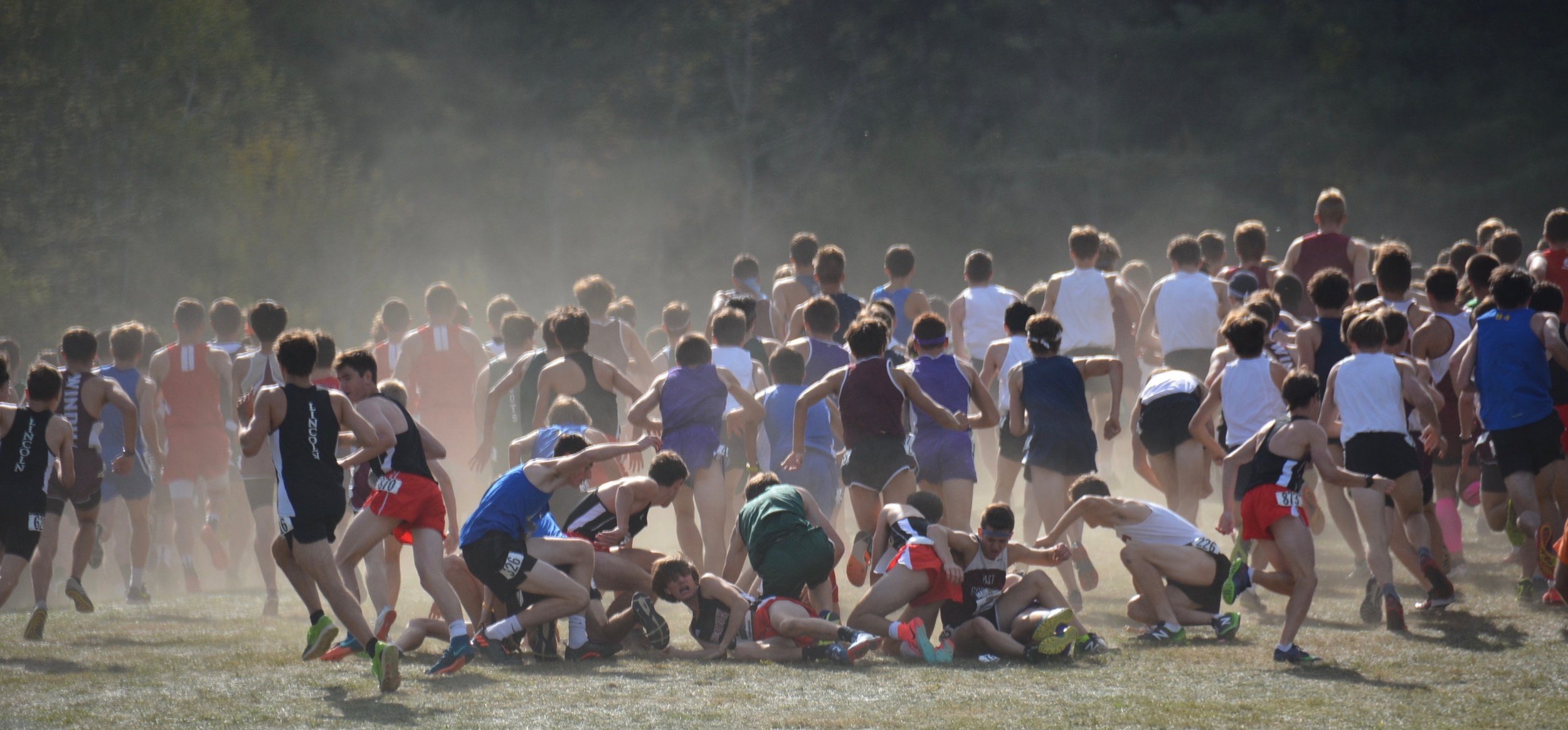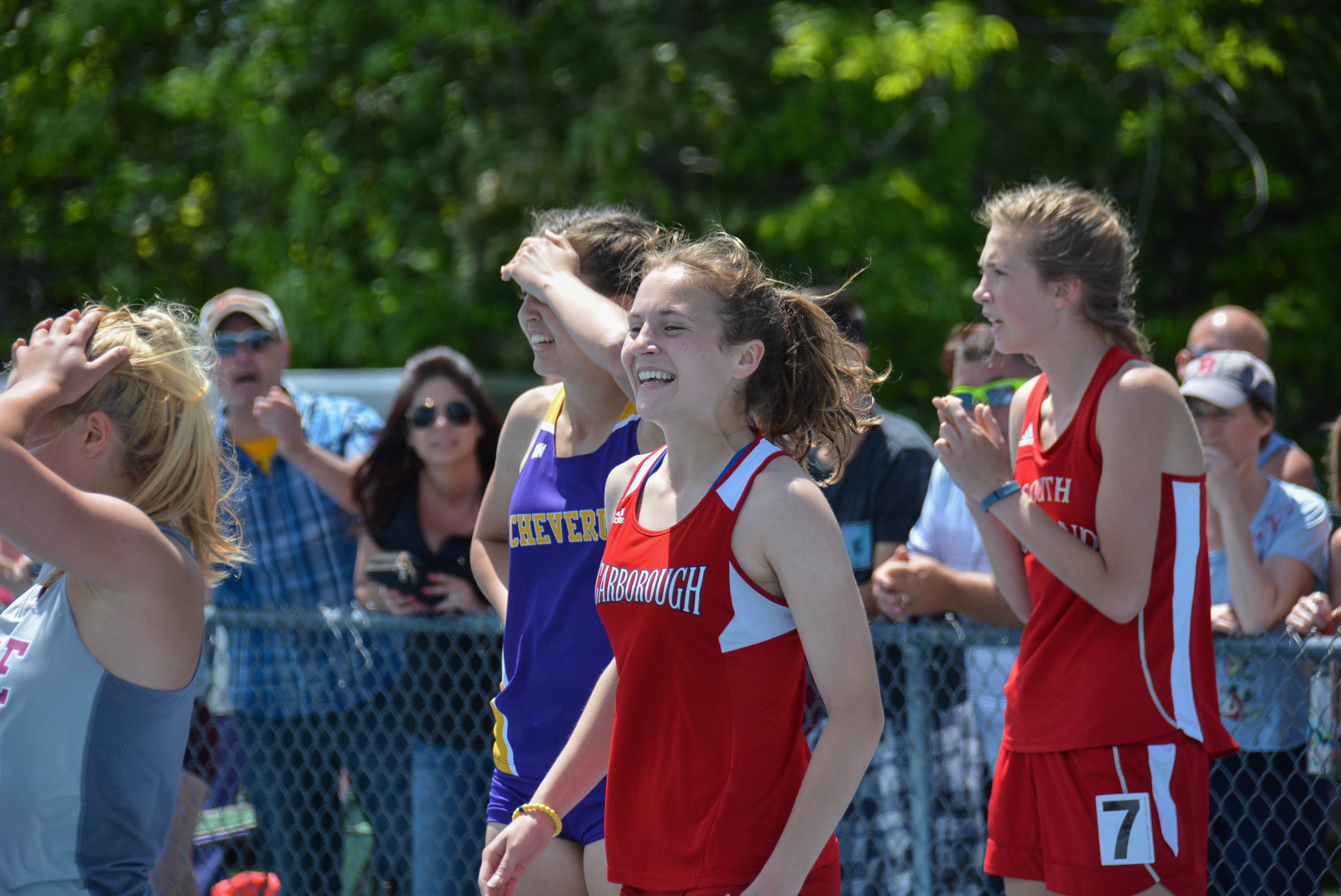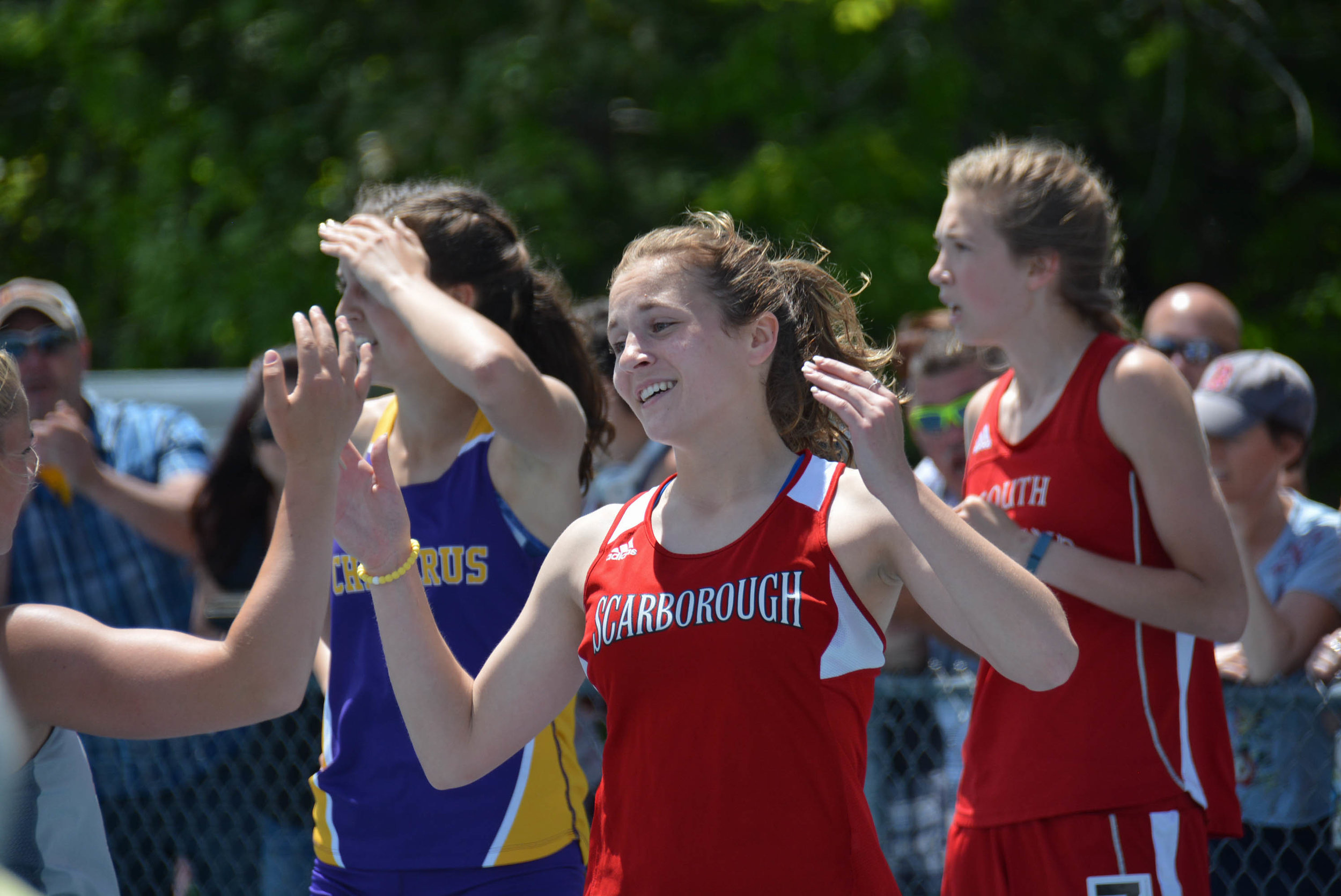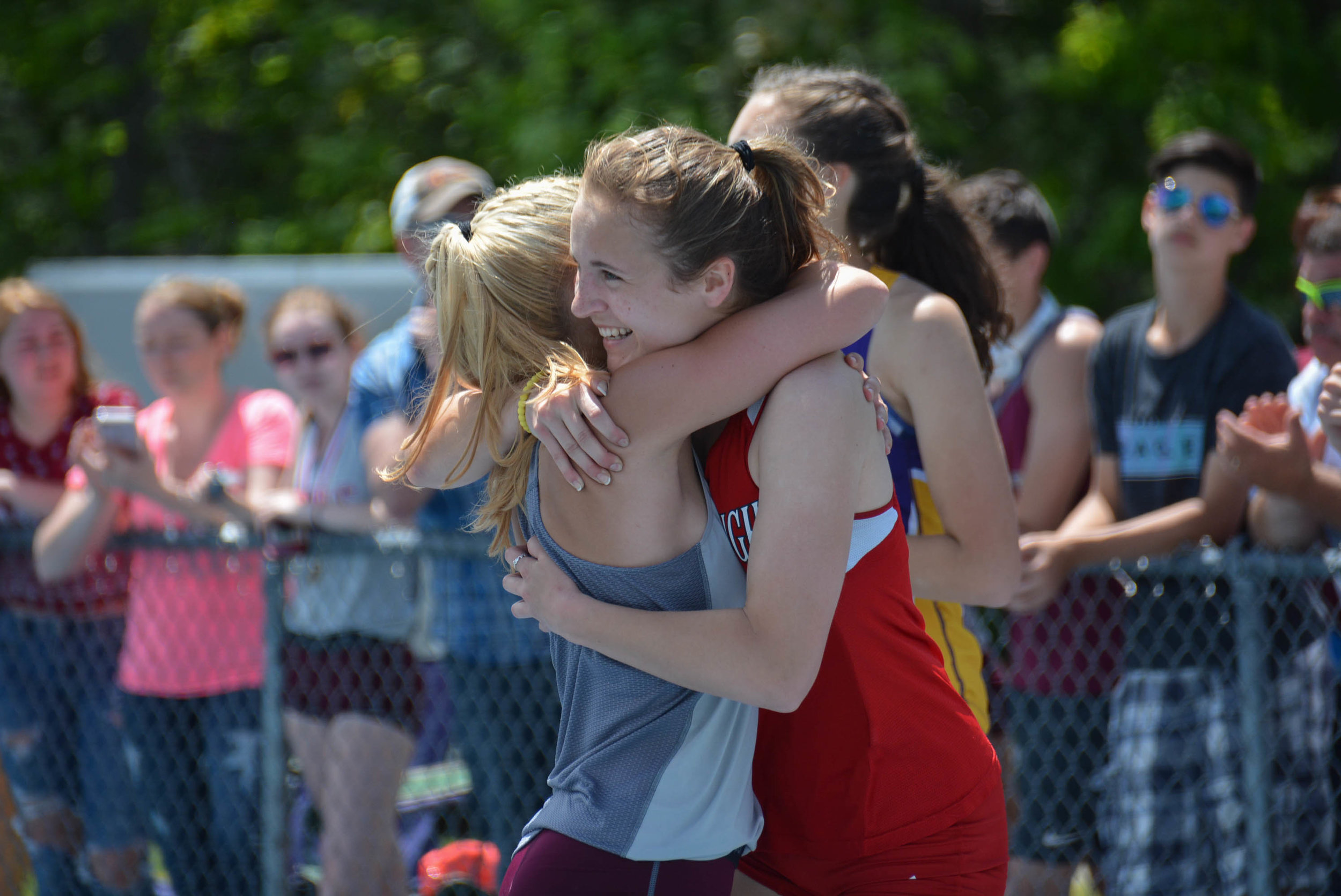Dale Arnold, with a timbre and face familiar to legions of New England Sports fans as the voice of, among others, the Boston Bruins and the New England Patriots, paid a visit to the Six Rivers Youth Sports Complex in Topsham and met with board president Bill Patterson and his team to review the plans for the new ice arena, hear about fundraising, tour the existing indoor turf facility, and to lend his support.
For many in attendance Dale’s tones and presence go back to his days on WBOR broadcasting Bowdoin College Hockey during the Polar Bears’ legendary Championship runs under iconic Coach Sid Watson or, even further, to the sidelines of the gridiron on McKeen Street in Brunswick where Dale cut his teeth as a teen doing play-by-play for Dragon football at WCME.
Dale’s embrace of Six Rivers Youth Sports’ mission was palpable the moment he mentioned his daughter’s hockey career. Dale noted that while he had lettered in four sports in high school he never played hockey himself but did become that most dutiful and passionate of all sports parents—a Hockey Dad. Dale has shivered by the glass in the early morning hours, been to rinks in the remotest corners of New England and the Maritimes, and spent nights in threadbare motels as knee hockey games raged in the corridors until all hours.
Dale knows the importance of local, public ice. Dale knows the importance of youth sports. And Dale knows the importance of inclusive opportunities.
With board members spanning the generations, reminisces flew. Doug Morrell, Brunswick High ’69 skated on the first artificial ice in the region when Bowdoin’s storied Dayton Area opened in 1956. He and Tim Griffing ’74 played in the era when Maine had just five high school hockey teams. Sid Pols, BHS ’23, the event videographer, told of winning a State Championship with the Dragons in 2022 and recounted Brunswick’s epic five overtime playoff win over the Cheverus/Yarmouth co-op that season.
Chelsea Bickford, Six RIvers’ project manager, is a second generation ice warrior with dual interests. In the late 70s when Maine High School Boys hockey expanded from five to eight teams her father hit the ice with the first Mt. Ararat varsity squad. Chelsea laced them up herself in high school using the skills she learned at the Skating Club of Brunswick to patrol the blue line for the Yarmouth Clippers Womens’ hockey team. But as a veteran figure skater and teacher whose mother led the Brunswick Skating Club for years, what she really misses is the Gala Shows every March.
Like a local Ice Capades these shows had it all and signaled the final event on Bowdoin’s ice every spring; there were sequins, costumes, skits, line routines but also real opportunities for local figure skaters to perform at a high level in spot lit glory for an adoring audience..
Everyone had a coldest rink story.
Everyone had a story about getting on the ice before school at 4:30 AM.
Everyone agreed that the region needs another indoor ice skating facility and that efforts like the Zamboni Pull fundraiser are vital to raise the rink..
The Zamboni Pull
Brunswick’s Hockey Moms, tired of driving all winter for practices, came equipped with work gloves to give the Zamboni a pull for their teams. The course had gotten smooth and fast by the end of the afternoon but the hockey Moms pulled first. Even with a Zamboni full of water and the course frozen and bumpy, the Moms got it done.
Sixteen teams braved classic stick season raw weather to lend helping hands to haul a seven ton Zamboni the length of a forty foot course adjacent to Six Rivers Youth Sports indoor turf field just off Route 201 in Topsham.
Their cause? Raise $400,000 before the end of the year to unlock a $400,000 matching grant so Six Rivers Youth Sports can move forward with plans to add an indoor, fully refrigerated, NHL sized ice arena to the lot. Familiar to many as the former sites of Roller World and “The Dome,” Six Rivers recently doubled the acreage available for the project. As the location has been a destination for generations of young people, the spot is a cinch as the best place to add a new ice sheet to the local inventory.
The Bowdoin Men’s Ice Hockey team, whose home ice, the Sidney J. Watson Arena, is the only other local sheet, stepped up to put several teams into the Zamboni Pulling contest but plenty of other luminaries put teams in as well. Like most good fundraisers, this was as much about Fun as Funds. Costumes and team apparel was de rigueur. “It was gratifying to all the volunteers at Six Rivers Youth Sports to see so many people turn out and pull together with excitement for the new rink,” said Bill Patterson, the longtime President of the non-profit’s board.
Being first on the course hampered the Brunswick Hockey Moms. The Moms were hamstrung by the fact that the Zamboni’s snow tank was still filled to the brim with water. Sloshing over many heats lightened its load so the boys from Bowdoin had it easy by their turn on the course. But hard work didn’t challenge these women; they’ve been putting in the miles for their skaters for years.
Nothing shows esprit de corps like Jorts. Izzy’s Fan Club got it done in the costume department.
Why does the region need a new ice arena? After-all Bowdoin’s state of the art Watson Arena is home to Brunswick 2022 State Champion Boys Hockey team, the State’s only public school with a stand alone girls team in the Brunswick Dragons, two teams from Mt. Ararat, and legions of youth hockey players and figure skaters throughout the community.
That is just the point. Things have changed since Bowdoin built its first indoor rink in 1956. The demands on ice time at the college have changed with the growth of women’s hockey at all levels and increased regionalization of high school sports.. The four high school teams from Mt. Ararat and Brunswick now represent six or eight different schools from Lisbon to Wiscasset, across to Freeport, and every town in between.
The twin sheets of Auburn’s Norway Savings Bank Arena have long been a second home for the area’s youth skaters but consider the 11 year-old skater sitting in a car with her parents, driving from somewhere on Orr’s Island to Auburn for hockey practice on a weekday night. She’s eating dinner on the fly in the car, and hitting the ice at 7 PM. After an hour of drills she will be lucky to be home for bed at 9 p.m. Meanwhile her mom is watching the snow falling, wondering what Rte. 196 will look like on the way home.
Led by Coach Ben Guite atop the Zamboni, the Bowdoin Men’s Ice Hockey team put several teams in the Zambini pull contest braving sleet and occasional snow to help raise some funds and awareness. The college has always been generous with the ice time but their first priority is their own students so there is simply not enough local ice available to fill the local demand..
It’s not just about youth youth hockey or high school hockey. The new rink will provide recreation for the area’s adult leagues, figure skaters, curling leagues, and recreational skaters. Even now, the turf field is an asset to the community providing off season indoor practice facilities for the local field hockey, lacrosse, and soccer players.
The Skating Club of Brunswick, for the time being constrained to giving lessons at one end of the ice while their recreational skating occupies the remainder of the sheet, will once again have the time and space to pull off its annual show and provide more competitive outlets for its talented skaters.
A 2016 estimate by Midcoast Youth Hockey found that a child spends a minimum of 66 hours in the car over the course of a season, to get 44 hours of practice time. Even carpooling with three players a car, the Midcoast Youth Hockey Association was driving roughly 62,000 miles a year to make sure its skaters got their ice time. No doubt the same is true for the region’s figure skaters.
So the Moms know driving and they know Zambonis. They also know a good time. While they came out clad in hockey jerseys representing the local squads, plenty of the other teams put on their best threads to celebrate the occasion. The unofficial best costume contest was a toss-up. On the one hand was Izzy’s Fab Club with their ugly seasonal sweaters and classic denim jorts. On the other was the Morning Wake-Up Hockey Club complete with Stove Pipe hats and a human sized rabbit mascot.
Pizzas, beer, and treats were provided by The Osprey, Moderation Brewing, and The Pejepscot.
All together this event raised $10,950 which together with the December match totals out to just shy of $22,000.
The existing indoor turf facility and fitness facility is at left in what was once the Roller World facility on Atwood Lane just off Route 201 in Topsham. Pictured at right is the proposed new indoor, fully refrigerated, NHL sized arena. Visit Six Rivers Youth Sports









































































